Featured Articles
Billion Dollar Daddy

Billion Dollar Daddy – At the long-awaited first official press conference to announce one of the most anticipated fights in boxing history, a dark figure emerges from the back of the stage to photobomb the customary final group picture of the main protagonists. He sneaks into the frame almost unnoticed, seeking the unearned attention of photographers, media and fans, smiling casually as he inserts himself in the moment while everyone asks what did he actually do to deserve that spot in a scene in which he hardly belongs.
We’re obviously talking about the obnoxious and unnerving presence of teen pop star and bad boy wannabee Justin Bieber, one of the most inexplicable figures in Floyd Mayweather’s entourage, in the final group photograph of the Mayweather-Pacquiao presser in Los Angeles on March 11th at the Nokia Theater. But we might as well be talking about an equally intrusive presence in that lineup, a largely irrelevant silhouette awkwardly pasted onto a press shot for a mega-bout that he did so much to keep from happening.
We are talking, of course, of Top Rank’s big boss, none other than 83-year old Hall of Fame promoter Bob Arum, a man who has spent a significant amount of time in his career putting together some of the most significant boxing matchups of all time, and who worked almost equally as hard to keep the most profitable and most desirable bout of his era from actually coming to fruition, whether on purpose or not.
Think of it as Hemingway’s fictional old man in the sea trying to actually fend off that giant marlin away from him and keeping it from actually jumping onto his canoe. Or just dragging it around just to allow sharks to tear it to pieces.
In all honesty, perhaps Arum’s intention was to mirror Hemingway’s tale in every possible way. After all, Santiago, the fictional fisherman, was trying to catch his elusive big prey after going 84 days without a catch. Perhaps Arum was waiting to finally become 84 years old in early December to finally hoist that heavy sea creature onto his vessel and thus make my brilliant analogy work. But the truth about Arum’s role in keeping this (and other fights) from coming to fruition may lay beyond this assumption.
Timing is what makes the difference between a clash of titans in their prime and a punch-drunk waltz between two has-beens. And as the world’s leading supplier of overblown main events with non-descript undercards filled with matches between young contenders and no-hopers, Arum knows that this game is all about the main event. And there is no bigger main event (possibly in history) than Pacquiao-Mayweather. Did he intentionally wanted to be remembered as the guy who stood in the way?
Maybe that’s just the case. Because maybe, just maybe, Arum’s diminished sense of timing is to blame for his childish obsession with delaying the negotiations and/or blatantly overpricing this bout in every possible way, some of them more active than others, with the excuse of having plotted a better revenue scenario for later. And even though some other reasons may have indeed been in play for the fight not to happen earlier, it is clear that Arum’s erratic behavior in the weeks leading to the impending mega-fight between Floyd Mayweather and Manny Pacquiao constitute a revealing indication of his loss of one of the most valuable assets a promoter should have.
It ain’t business, Manny. It’s strictly personal
Ever since he got his start as a boxing promoter after looking at the numbers in certain tax documents related to a Muhammad Ali fight back in the late ‘60s thanks to his job in the Justice Department in New York and deciding that his time would be more wisely invested in that particular field (in which he had almost no prior interest), Arum grew in giant strides thanks to his ability to allow the best fighters of his era fight each other in their prime.
Three examples are enough to reaffirm Arum’s claim to greatness: Ali-Frazier I, Leonard-Hagler, and De La Hoya-Trinidad. Even for the most casual of boxing fans, these are more than enough to prove the value of Arum’s work as a promoter.
But just as those fights could not have been made with only one fighter in the ring, Arum did not produce those bouts on his own. For most of his most important promotions, he was forced to engage in oftentimes brutal negotiations with rival promoters, most notably his sworn enemy and fellow mega-promoter Don King. If anything, Arum’s ability to deal with King’s flamboyant personality and unorthodox business practices only enhanced Arum’s credentials as a top promoter.
But as time progressed, the once-savvy businessman found himself running a virtual monopoly at the very top of the boxing game he once fought so hard to break into. His work with superstar pay-per-view darling Oscar De La Hoya put him in the driver’s seat in the post-Tyson era of boxing, in which the once-dominant heavyweight division took a back seat to a thriving welter-middle-ish weight region. Arum’s business acumen, as well as the lack of competent competitors in the scene, led him to a dominant position in the boxing landscape that extended during a good portion of the ‘90s and early 2000s.
But that’s when disaster began to strike. His personal relationship with De La Hoya (now a promoter in his own right) deteriorated to a point in which they stopped talking to each other, and their stables began suffering the consequences of that rift. Soon enough, the sub-plot of their personal rivalry took center stage, and the chances of certain fights being made or not was directly linked to the name of the fighter’s promoters instead of their own.
And the worst was yet to come.
Arum’s new cash cow after De La Hoya’s departure was another former Olympian he had managed to snatch away at the last minute from the hands of another promoter. That young fellow happened to be as ambitious as the young Oscar was, and soon enough he began asking for the attention and the money that he believed he deserved.
Soon enough, he would get both, and in large amounts, but only after leaving his old promoter behind.
Back in those days, Floyd Mayweather (the young rising star in question, in case you’re still asking) insisted on requesting $20 million dollars to face Oscar De La Hoya. For Arum, the time wasn’t right and the payout was too low. But it wouldn’t be the last time he would be wrong in his prognosis.
Having grown impatient with Arum’s unwillingness to produce the big fights he craved, Mayweather finally found a way to cancel his contract with Top Rank for a ridiculous sum of money (less than a million dollars) and soon enough he was on his way to face Oscar under his newly minted promotional banner.
His take for the mega-fight? A cool $25 million.
A pattern was set. A new force in boxing business was born. And a personal feud between Arum and Mayweather had arisen. A feud that, despite their occasional polite exchanges, runs deep still after all these years, and which was the driving force for not allowing the Mayweather-Pacquiao bout to materialize even in the face of an unbelievable amount of pressure from fans, media, TV networks and fighters themselves.
Soon enough, what could have been an isolated incident became the norm at Top Rank. Some of the most eagerly anticipated and long-awaited matchups in recent years failed to become a reality because of Arum’s suddenly flawed sense of ripeness.
A potentially very lucrative and phenomenally attractive fight between Cuba’s Yuriorkis Gamboa and Puerto Rico’s Juan Manuel Lopez was put off indefinitely based on the assumption that Arum would be able to pinpoint the perfect moment in time as if on a mandate from a higher power.
Fast-forward a few years, and both fighters are on their way to becoming stepping stones for younger contenders, a few steps closer to retirement and at least a couple of million dollars none the richer thanks to their belief in a promise of a larger payday down the road.
At around the same time, the presence of two young and tough Mexican middleweights galvanized the attention of their country every time they stepped into the ring. One had the looks, the other one had the name, and they both had the style and the punching power to turn their fight into one of the most eagerly awaited rivalries in Mexico’s storied boxing history.
But in Arum’s mind, the fight was not going to just make money. It was going to make money rain from the sky. The huge Aztec Stadium in Mexico City was going to be filled to the rafters for the most lucrative and exciting all-Mexican fight of all times. The bout was so insistently discussed online that this scribe had to ban the very question of “when will Canelo and Junior finally fight?” from his weekly chat with the fans.
And yet, here we are only a few years later, with Julio Cesar Chavez Jr. finally released from Arum’s grip and having lost by stoppage as a light-heavyweight, and Saul “Canelo” Alvarez still fighting at the super welterweight-ish level and on his way to become a superstar under the guidance of Oscar De La Hoya, and with millions of Mexican fans still holding their neatly folded dollar bills in their hands and waiting in line to buy a ticket for a fight for pride and country that will never happen.
But even though Arum’s now diminished sense of momentum is to blame for those bragging rights to go unclaimed and for at least those two bouts not happening, the reason for the five-year delay in making the Mayweather-Pacquiao bout can be attributed also to Arum’s unwillingness to acknowledge Mayweather not only as a fighter, but also as the rival promoter that he has become after creating his own promotional brand in The Money Team, also known as Mayweather Promotions. By placing the blame on Mayweather’s controversial handler Al Haymon, Arum created a personal chasm between himself and Mayweather that soon transcended the business realm to become a personal matter.
Soon enough, Arum was comparing Mayweather with Hitler and attacking him relentlessly in the press, while Mayweather retaliated by openly calling for banishing Arum from the sport of boxing. They both publicly swore to never allow the other to pocket as much as a penny from each other’s efforts.
And just when all hope was seemingly lost, a new plan popped up in Arum’s mind. Another giant marlin to be hooked out of the ocean in one last heroic move to save the day, and to help him etch his name even deeper in the marbles of the pantheon of pugilism.
And the minor fact that it involved the untested drawing power of a virtually unknown fighter with only 5 or 6 professional fights hailing from a country with absolutely no boxing tradition was not going to stand in Arum’s way.
The Chinaman is the issue here, Bob
“Zou Shiming is the driving force for taking pay-per-view into China,” said Arum about the 34-year old flyweight contender and former Olympic star who has been showcased regularly in Top Rank’s promotions in China in recent years. “They idolize him. Combine his appeal with Pacquiao-Mayweather and we are looking at numbers undreamed of before.”
After turning down several offers and having some of his own offers scoffed by Mayweather’s team through the years, Arum plotted a larger-than-life scenario in which the fight would collect a billion dollars. Yes, that’s one thousand million dollars, most of them coming from a nation with no boxing tradition and no tested PPV structure for an event of that magnitude.
In Arum’s mind, the marlin du jour could weigh as much as an elephant and still be hooked right out of the water if everyone followed his delirious master plan, which involved an elaborate architecture combining several sources of income.
Arum proposed a $5 Pay-Per-View for China, imagining that at least 10 percent of the entire population would purchase the fight to produce a staggering $650 million dollars to watch a boxing match while eating breakfast. Add to that the $300 million he aimed to make in the US at $95 for each PPV. Throw in the site fee and the large television fees from around the globe, the live gate, sponsors, merchandising and other revenue streams, and you got yourself the first billion dollar fight in boxing history.
It does sound like an idea straight out of Rocky XXV (Billions, Rocky! Think o’that! Listen to Paulie for once, will ya?), but it was an actual business proposal by one of boxing’s top promoters of all time. And if it did have any effect at all, it was the rippling effect throughout the boxing industry clamoring for a voice of reason to put a stop to this insanity.
And of course, Zou Shiming did his part by being defeated in his first title challenge, which came in his 7th professional bout. The stage was set for a major change in the dynamics of the negotiation. But no one could even imagine how would the whole mess would be finally untangled.
Let’s just say that, even though it did not involve the presence of lawyers or judges, the matter was solved in court.
Halfway meeting at halftime
At the not-particularly-anticipated matchup between the Miami Heat and the Milwaukee Bucks of the NBA in Miami’s American Airlines Arena, two figures emerge from opposite courtside seats to meet in the middle of the court for an impromptu chat and a rare photo opportunity. They clash head-on in uncharacteristically friendly terms, immediately earning the attention of photographers, media and fans, smiling casually and engaging in a conversation captured by a picture that instantly becomes a viral internet sensation.
Call it a hail-Mary sky-hook right on the buzzer with the game on the line. Call it destiny, fate, or Mayweather’s final rite of passage as the consummate self promoter he claims to be. But the truth is that the combined business knowledge of a dozen TV executives and boxing promoters was nowhere in sight when the “Fight of the Century” finally took its first baby step into life.
All it took was a halfway meeting of the most literal nature to make the fight happen, with both fighters finally coming to the realization that the fight was literally in their hands. Borrowing a page from his own history book, Mayweather took matters out of Arum’s hands and into his own again and carried his proposal directly to Pacquiao in a meeting that was anything but casual.
Both men have been known for their devotion for the NBA, with Mayweather flying his personal jet to wherever there is a good game on, and Pacquiao turning his own passion for hoops up a notch by purchasing his own team in the Philippines and appointing himself as the unlikely Jackie Moon-esque point guard. Pacquiao’s presence in that game was anticipated by Mayweather, who then flew specially to Miami for the occasion, and the rest is history.
Soon enough, CBS chief Leslie Moonves began unilaterally pulling the strings to bring the less relevant group of protagonists together, at the behest of none other than his usual waiter at his favorite restaurant. He invited Mayweather’s advisor Al Haymon and Pacquiao’s promoter Bob Arum to his house to iron out the details of a deal that had already been concocted in broad strokes by the principals themselves during a meeting after the aforementioned game in Pacquiao’s hotel room, with an ironing board nearby standing as the sole witness of the event (no, seriously, who in the world set up this meeting in that place? Where is the large exotic wood table, the designer chairs, the excessive pastry and the jug of tepid tap water? C’mon, people!!).
As for Arum, everything went pretty much downhill for him after that situation. Which, if we compare to Arum’s previous line of work, was like watching Arum barging into a courtroom appointment an hour late only to find out that plaintiff and defendant had already solved their matters without any outside help, and with the honorable judge Moonves simply waiting for Arum to sign off on the plea to get things going.
After that, Arum was summarily demoted to glorified mandatory chaperone of the Pacquiao entourage, trying to give the image of being calm and relevant in every event related to the fight, when it was clear that he was anything but that.
His usual business-like demeanor gave way to a cranky, oftentimes childish behavior tinged with a bitter mixture of jealousy and spite for the entire event. His dull and grandiose speech during the first press conference at the Nokia Theater, with a long and unnecessary presence at the podium, was the first sign of what loomed as one of the most awkward promotions ever put together by Top Rank.
His similarly obnoxious behavior at the last press conference on Wednesday, April 29th in Las Vegas was just another sign of his uncomfortable stance on the whole promotion. Arum also arranged for Pacquiao not to participate in the massive meet-and-greet with the fans in the lobby of the MGM Grand on the Tuesday before the fight, preferring to stage a more private event elsewhere. And obviously there was the Teleconference-Gate, where Arum ended a conference call abruptly with a profanity-laced performance at the phone, depriving the media from around the world from one of the few chances to speak with Pacquiao ahead of the most important fight of his career.
It could be said that the guilt of pricing Manny out of this fight for such a long time finally turned back on Arum to haunt him, but the truth is that the role of the promoter in these cases is as clear as Arum’s refusal to abide by it, and going to such lengths to express his discontent is only going to hurt his fighter and his future business.
That, of course, is if Arum thinks there is a future for him in this business, which at the age of 83 is not easy to assure. With the promotion of the most profitable fight in history having him as the “odd man in” continuously sabotaging press events with his self-centered antics, it is unlikely that a potential rematch could have him anywhere near the driver’s seat now that the true protagonists of the show know that a fruitful negotiation is just one casual meeting away, in the comfort of their favorite laundry room at their favorite hotel.
But if history has taught us something, is that ruling Arum out is never a good idea. Especially when he smells blood in the water.
Grandpa’s gone fishing
In the months leading to the fight, Arum endured a sustained attack from all sides regarding his role as more of a roadblock than a mediator in the making of this fight.
He began by brandishing a unilaterally signed agreement in a vain attempt to challenge Mayweather to sign for a fight under his own terms, in a delusional move that even Don King would have ruled out as excessively extortive. He was bluntly offered a lump sum to the tune of $10 million dollars by the Mayweather camp to step aside and allow Pacquiao to negotiate on his own. He was politely asked to release Pacquiao from his contract by the fighter’s own attorney in the Philippines. The desire of a lowly waiter in a restaurant somewhere weighed more than his own drive to success in the making of this event. And to top things off, he forced a simple yet important promotional tool as a worldwide conference call to join boxing’s illustrious list of what-ifs and what-wouldabeens. His painful admission, a mere 9 days before the bout, that he had no idea of why tickets had not been put up for sale, was just the icing on the cake.
Bang-up job so far. And after a final self-complacent performance at the podium in the last presser of the event, in which he exchanged smirks with MGM honcho Richard Sturm (no, he was not the keyboard player for REO Speedwagon, regardless of what his hairdo might suggest) when he decided that lashing out his rage at the hosting facilities would be a lovely idea to kickstart the event, his role as big-time promoter (in the truest sense of the word) is definitely up for review.
Those situations are indeed going to play a role in his future involvement in a potential rematch. If the fight ends up being as big as everyone predicts it to be, and the rest of the main characters in this production deem Arum as more of a nuisance than anything else, his role in the eventual second part will be forced to be limited to a minimum, if anything.
But that doesn’t stop Arum from believing that he can pull off an even bigger event the second time around, especially if his man wins. Even though his role in the capture of boxing’s biggest marlin in history is still in dispute, Captain Arum wants to make boxing to boldly go where no other promoter has taken it before.
Whether he can do that, after having a very limited role in the first fight and with no rematch clause on the contract, remains to be seen. The age of both fighters rules out the possibility of another long negotiation, and pricing Manny out of the eventual rematch would be the final blow in Arum’s ongoing bout with Father Timing.
Indeed, the promise of a gazillion dollar extravaganza rematch may not be enough to revive his once-glorious career, but that will not keep Arum from believing that he can pull it off.
And yet, even in the face of the overwhelming proof that maybe, just maybe, it’s time for Arum to let that last one marlin swim free towards the sunset.
Diego Morilla, a bilingual boxing writer since 1995, is a full member of the Boxing Writers Association of America. He served as boxing writer for ESPNdeportes.com and ESPN.com, and is now a regular contributor to RingTV.com and HBO.com, as well as the resident boxing writer for XNSports.com. Follow him on Twitter @MorillaBoxing
Follow @MorillaBoxing / Billion Dollar Daddy
Featured Articles
Avila Perspective, Chap. 326: Top Rank and San Diego Smoke
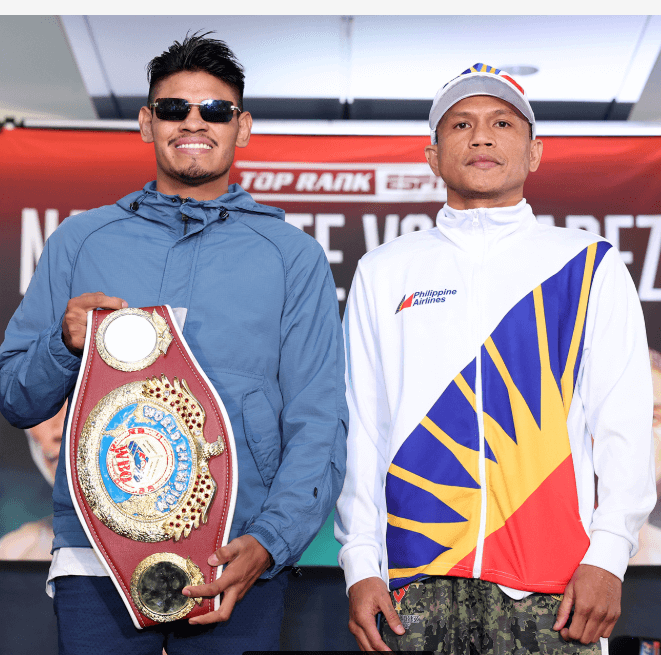
Avila Perspective, Chap. 326: Top Rank and San Diego Smoke
Years ago, I worked at a newsstand in the Beverly Hills area. It was a 24-hour a day version and the people that dropped by were very colorful and unique.
One elderly woman Eva, who bordered on homeless but pridefully wore lipstick, would stop by the newsstand weekly to purchase a pack of menthol cigarettes. On one occasion, she asked if I had ever been to San Diego?
I answered “yes, many times.”
She countered “you need to watch out for San Diego Smoke.”
This Saturday, Top Rank brings its brand of prizefighting to San Diego or what could be called San Diego Smoke. Leading the fight card is Mexico’s Emanuel Navarrete (39-2-1, 32 KOs) defending the WBO super feather title against undefeated Filipino Charly Suarez (18-0, 10 KOs) at Pechanga Arena. ESPN will televise.
This is Navarrete’s fourth defense of the super feather title.
The last time Navarrete stepped in the boxing ring he needed six rounds to dismantle the very capable Oscar Valdez in their rematch. One thing about Mexico City’s Navarrete is he always brings “the smoke.”
Also, on the same card is Fontana, California’s Raymond Muratalla (22-0, 17 KOs) vying for the interim IBF lightweight title against Russia’s Zaur Abdullaev (20-1, 12 KOs) on the co-main event.
Abdullaev has only fought once before in the USA and was handily defeated by Devin Haney back in 2019. But that was six years ago and since then he has knocked off various contenders.
Muratalla is a slick fighting lightweight who trains at the Robert Garcia Boxing Academy now in Moreno Valley, Calif. It’s a virtual boot camp with many of the top fighters on the West Coast available to spar on a daily basis. If you need someone bigger or smaller, stronger or faster someone can match those needs.
When you have that kind of preparation available, it’s tough to beat. Still, you have to fight the fight. You never know what can happen inside the prize ring.
Another fighter to watch is Perla Bazaldua, 19, a young and very talented female fighter out of the Los Angeles area. She is trained by Manny Robles who is building a small army of top female fighters.
Bazaldua (1-0, 1 KO) meets Mona Ward (0-1) in a super flyweight match on the preliminary portion of the Top Rank card. Top Rank does not sign many female fighters so you know that they believe in her talent.
Others on the Top Rank card in San Diego include Giovani Santillan, Andres Cortes, Albert Gonzalez, Sebastian Gonzalez and others.
They all will bring a lot of smoke to San Diego.
Probox TV
A strong card led by Erickson “The Hammer” Lubin (26-2, 18 KOs) facing Ardreal Holmes Jr. (17-0, 6 KOs) in a super welterweight clash between southpaws takes place on Saturday at Silver Spurs Arena in Kissimmee, Florida. PROBOX TV will stream the fight card.
Ardreal has rocketed up the standings and now faces veteran Lubin whose only losses came against world titlists Sebastian Fundora and Jermell Charlo. It’s a great match to decide who deserves a world title fight next.
Another juicy match pits Argentina’s Nazarena Romero (14-0-2) against Mexico’s Mayelli Flores (12-1-1) in a female super bantamweight contest.
Nottingham, England
Anthony Cacace (23-1, 8 KOs) defends the IBO super featherweight title against Leigh Wood (28-3, 17 KOs) in Wood’s hometown on Saturday at Nottingham Arena in Nottingham, England. DAZN will stream the Queensberry Promotions card.
Ireland’s Cacace seems to have the odds against him. But he is no stranger to dancing in the enemy’s lair or on foreign territory. He formerly defeated Josh Warrington in London and Joe Cordina in Riyadh in IBO title defenses.
Lampley at Wild Card
Boxing telecaster Jim Lampley will be signing his new book It Happened! at the Wild Card Boxing gym in Hollywood, Calif. on Saturday, May 10, beginning at 2 p.m. Lampley has been a large part of many of the greatest boxing events in the past 40 years. He and Freddie Roach will be at the signing.
Fights to Watch (All times Pacific Time)
Sat. DAZN 11 a.m. Anthony Cacace (23-1) vs Leigh Wood (28-3).
Sat. PROBOX.tv 3 p.m. Erickson Lubin (26-2) vs Ardreal Holmes Jr. (17-0).
Sat. ESPN 7 p.m. Emanuel Navarrete (39-2-1) vs Charly Suarez (18-0); Raymond Muratalla (22-0) vs Zaur Abdullaev (20-1).
Photo credit: Mikey Williams / Top Rank
To comment on this story in the Fight Forum CLICK HERE
Featured Articles
“Breadman” Edwards: An Unlikely Boxing Coach with a Panoramic View of the Sport
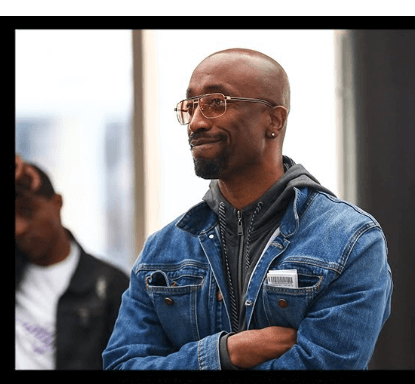
Stephen “Breadman” Edwards’ first fighter won a world title. That may be some sort of record.
It’s true. Edwards had never trained a fighter, amateur or pro, before taking on professional novice Julian “J Rock” Williams. On May 11, 2019, Williams wrested the IBF 154-pound world title from Jarrett Hurd. The bout, a lusty skirmish, was in Fairfax, Virginia, near Hurd’s hometown in Maryland, and the previously undefeated Hurd had the crowd in his corner.
In boxing, Stephen Edwards wears two hats. He has a growing reputation as a boxing coach, a hat he will wear on Saturday, May 31, at Mandalay Bay in Las Vegas when the two fighters that he currently trains, super middleweight Caleb Plant and middleweight Kyrone Davis, display their wares on a show that will air on Amazon Prime Video. Plant, who needs no introduction, figures to have little trouble with his foe in a match conceived as an appetizer to a showdown with Jermall Charlo. Davis, coming off his career-best win, an upset of previously undefeated Elijah Garcia, is in tough against fast-rising Cuban prospect Yoenli Hernandez, a former world amateur champion.
Edwards’ other hat is that of a journalist. His byline appears at “Boxing Scene” in a column where he answers questions from readers.
It’s an eclectic bag of questions that Breadman addresses, ranging from his thoughts on an upcoming fight to his thoughts on one of the legendary prizefighters of olden days. Boxing fans, more so than fans of any other sport, enjoy hashing over fantasy fights between great fighters of different eras. Breadman is very good at this, which isn’t to suggest that his opinions are gospel, merely that he always has something provocative to add to the discourse. Like all good historians, he recognizes that the best history is revisionist history.
“Fighters are constantly mislabled,” he says. “Everyone talks about Joe Louis’s right hand. But if you study him you see that his left hook is every bit as good as his right hand and it’s more sneaky in terms of shock value when it lands.”
Stephen “Breadman” Edwards was born and raised in Philadelphia. His father died when he was three. His maternal grandfather, a Korean War veteran, filled the void. The man was a big boxing fan and the two would watch the fights together on the family television.
Edwards’ nickname dates to his early teen years when he was one of the best basketball players in his neighborhood. The derivation is the 1975 movie “Cornbread, Earl and Me,” starring Laurence Fishburne in his big screen debut. Future NBA All-Star Jamaal Wilkes, fresh out of UCLA, plays Cornbread, a standout high school basketball player who is mistakenly murdered by the police.
Coming out of high school, Breadman had to choose between an academic scholarship at Temple or an athletic scholarship at nearby Lincoln University. He chose the former, intending to major in criminal justice, but didn’t stay in college long. What followed were a succession of jobs including a stint as a city bus driver. To stay fit, he took to working out at the James Shuler Memorial Gym where he sparred with some of the regulars, but he never boxed competitively.
Over the years, Philadelphia has harbored some great boxing coaches. Among those of recent vintage, the names George Benton, Bouie Fisher, Nazeem Richardson, and Bozy Ennis come quickly to mind. Breadman names Richardson and West Coast trainer Virgil Hunter as the men that have influenced him the most.
We are all a product of our times, so it’s no surprise that the best decade of boxing, in Breadman’s estimation, was the 1980s. This was the era of the “Four Kings” with Sugar Ray Leonard arguably standing tallest.
Breadman was a big fan of Leonard and of Leonard’s three-time rival Roberto Duran. “I once purchased a DVD that had all of Roberto Duran’s title defenses on it,” says Edwards. “This was a back before the days of YouTube.”
But Edwards’ interest in the sport goes back much deeper than the 1980s. He recently weighed in on the “Pittsburgh Windmill” Harry Greb whose legend has grown in recent years to the point that some have come to place him above Sugar Ray Robinson on the list of the greatest of all time.
“Greb was a great fighter with a terrific resume, of that there is no doubt,” says Breadman, “but there is no video of him and no one alive ever saw him fight, so where does this train of thought come from?”
Edwards notes that in Harry Greb’s heyday, he wasn’t talked about in the papers as the best pound-for-pound fighter in the sport. The boxing writers were partial to Benny Leonard who drew comparisons to the venerated Joe Gans.
Among active fighters, Breadman reserves his highest praise for Terence Crawford. “Body punching is a lost art,” he once wrote. “[Crawford] is a great body puncher who starts his knockouts with body punches, but those punches are so subtle they are not fully appreciated.”
If the opening line holds up, Crawford will enter the ring as the underdog when he opposes Canelo Alvarez in September. Crawford, who will enter the ring a few weeks shy of his 38th birthday, is actually the older fighter, older than Canelo by almost three full years (it doesn’t seem that way since the Mexican redhead has been in the public eye so much longer), and will theoretically be rusty as 13 months will have elapsed since his most recent fight.
Breadman discounts those variables. “Terence is older,” he says, “but has less wear and tear and never looks rusty after a long layoff.” That Crawford will win he has no doubt, an opinion he tweaked after Canelo’s performance against William Scull: “Canelo’s legs are not the same. Bud may even stop him now.”
Edwards has been with Caleb Plant for Plant’s last three fights. Their first collaboration produced a Knockout of the Year candidate. With one ferocious left hook, Plant sent Anthony Dirrell to dreamland. What followed were a 12-round setback to David Benavidez and a ninth-round stoppage of Trevor McCumby.
Breadman keeps a hectic schedule. From Monday through Friday, he’s at the DLX Gym in Las Vegas coaching Caleb Plant and Kyrone Davis. On weekends, he’s back in Philadelphia, checking in on his investment properties and, of greater importance, watching his kids play sports. His 14-year-old daughter and 12-year-old son are standout all-around athletes.
On those long flights, he has plenty of time to turn on his laptop and stream old fights or perhaps work on his next article. That’s assuming he can stay awake.
To comment on this story in the Fight Forum CLICK HERE
Featured Articles
Arne’s Almanac: The Good, the Bad, and the (Mostly) Ugly; a Weekend Boxing Recap and More
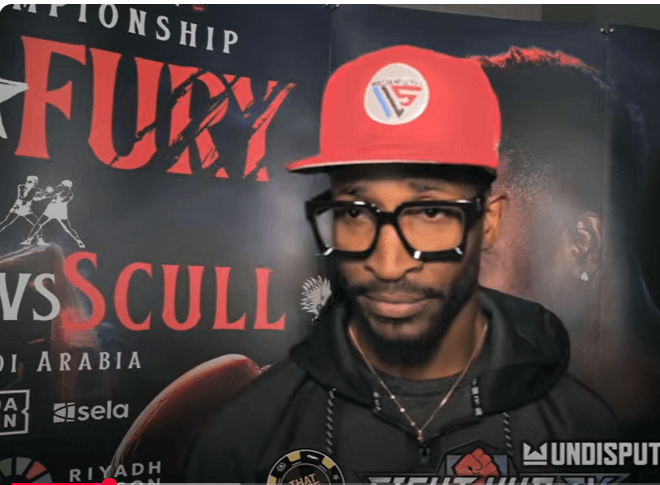
Arne’s Almanac: The Good, the Bad, and the (Mostly) Ugly; a Weekend Boxing Recap and More
It’s old news now, but on back-to-back nights on the first weekend of May, there were three fights that finished in the top six snoozefests ever as measured by punch activity. That’s according to CompuBox which has been around for 40 years.
In Times Square, the boxing match between Devin Haney and Jose Carlos Ramirez had the fifth-fewest number of punches thrown, but the main event, Ryan Garcia vs. Rolly Romero, was even more of a snoozefest, landing in third place on this ignoble list.
Those standings would be revised the next night – knocked down a peg when Canelo Alvarez and William Scull combined to throw a historically low 445 punches in their match in Riyadh, Saudi Arabia, 152 by the victorious Canelo who at least pressed the action, unlike Scull (pictured) whose effort reminded this reporter of “Cat on a Hot Tin Roof” – no, not the movie starring Paul Newman, just the title.
CompuBox numbers, it says here, are best understood as approximations, but no amount of rejiggering can alter the fact that these three fights were stinkers. Making matters worse, these were pay-per-views. If one had bundled the two events, rather than buying each separately, one would have been out $90 bucks.
****
Thankfully, the Sunday card on ESPN from Las Vegas was redemptive. It was just what the sport needed at this moment – entertaining fights to expunge some of the bad odor. In the main go, Naoya Inoue showed why he trails only Shohei Ohtani as the most revered athlete in Japan.
Throughout history, the baby-faced assassin has been a boxing promoter’s dream. It’s no coincidence that down through the ages the most common nickname for a fighter – and by an overwhelming margin — is “Kid.”
And that partly explains Naoya Inoue’s charisma. The guy is 32 years old, but here in America he could pass for 17.
Joey Archer
Joey Archer, who passed away last week at age 87 in Rensselaer, New York, was one of the last links to an era of boxing identified with the nationally televised Friday Night Fights at Madison Square Garden.
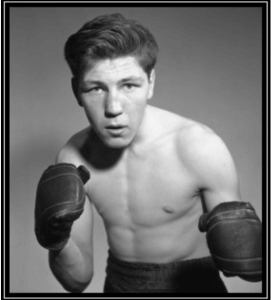
Joey Archer
Archer made his debut as an MSG headliner on Feb. 4, 1961, and had 12 more fights at the iconic mid-Manhattan sock palace over the next six years. The final two were world title fights with defending middleweight champion Emile Griffith.
Archer etched his name in the history books in November of 1965 in Pittsburgh where he won a comfortable 10-round decision over Sugar Ray Robinson, sending the greatest fighter of all time into retirement. (At age 45, Robinson was then far past his peak.)
Born and raised in the Bronx, Joey Archer was a cutie; a clever counter-puncher recognized for his defense and ultimately for his granite chin. His style was embedded in his DNA and reinforced by his mentors.
Early in his career, Archer was domiciled in Houston where he was handled by veteran trainer Bill Gore who was then working with world lightweight champion Joe Brown. Gore would ride into the Hall of Fame on the coattails of his most famous fighter, “Will-o’-the Wisp” Willie Pep. If Joey Archer had any thoughts of becoming a banger, Bill Gore would have disabused him of that notion.
In all honesty, Archer’s style would have been box office poison if he had been black. It helped immensely that he was a native New Yorker of Irish stock, albeit the Irish angle didn’t have as much pull as it had several decades earlier. But that observation may not be fair to Archer who was bypassed twice for world title fights after upsetting Hurricane Carter and Dick Tiger.
When he finally caught up with Emile Griffith, the former hat maker wasn’t quite the fighter he had been a few years earlier but Griffith, a two-time Fighter of the Year by The Ring magazine and the BWAA and a future first ballot Hall of Famer, was still a hard nut to crack.
Archer went 30 rounds with Griffith, losing two relatively tight decisions and then, although not quite 30 years old, called it quits. He finished 45-4 with 8 KOs and was reportedly never knocked down, yet alone stopped, while answering the bell for 365 rounds. In retirement, he ran two popular taverns with his older brother Jimmy Archer, a former boxer who was Joey’s trainer and manager late in Joey’s career.
May he rest in peace.
To comment on this story in the Fight Forum CLICK HERE
-
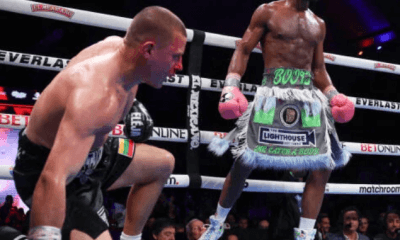
 Featured Articles4 weeks ago
Featured Articles4 weeks agoJaron ‘Boots’ Ennis Wins Welterweight Showdown in Atlantic City
-

 Featured Articles4 weeks ago
Featured Articles4 weeks agoBoxing Notes and Nuggets from Thomas Hauser
-
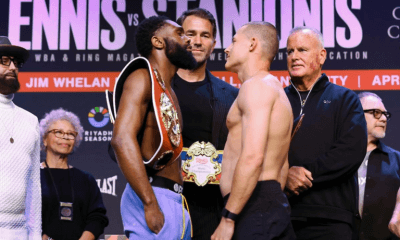
 Featured Articles4 weeks ago
Featured Articles4 weeks agoAvila Perspective Chap 320: Boots Ennis and Stanionis
-
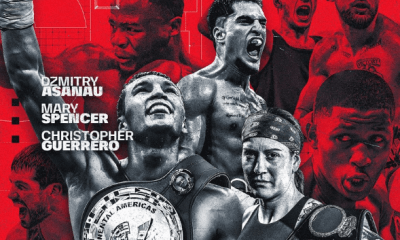
 Featured Articles4 weeks ago
Featured Articles4 weeks agoDzmitry Asanau Flummoxes Francesco Patera on a Ho-Hum Card in Montreal
-
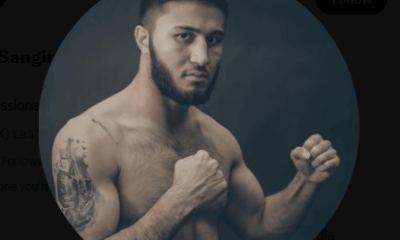
 Featured Articles3 weeks ago
Featured Articles3 weeks agoMekhrubon Sanginov, whose Heroism Nearly Proved Fatal, Returns on Saturday
-

 Featured Articles3 weeks ago
Featured Articles3 weeks agoAvila Perspective, Chap. 322: Super Welterweight Week in SoCal
-
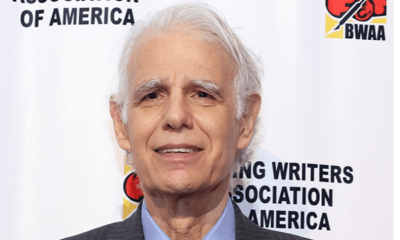
 Featured Articles3 weeks ago
Featured Articles3 weeks agoTSS Salutes Thomas Hauser and his Bernie Award Cohorts
-
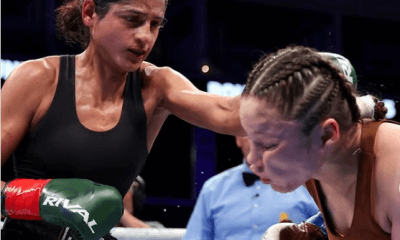
 Featured Articles3 weeks ago
Featured Articles3 weeks agoGabriela Fundora KOs Marilyn Badillo and Perez Upsets Conwell in Oceanside















